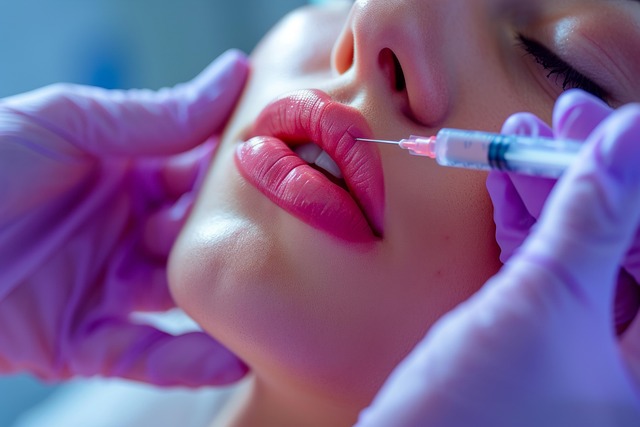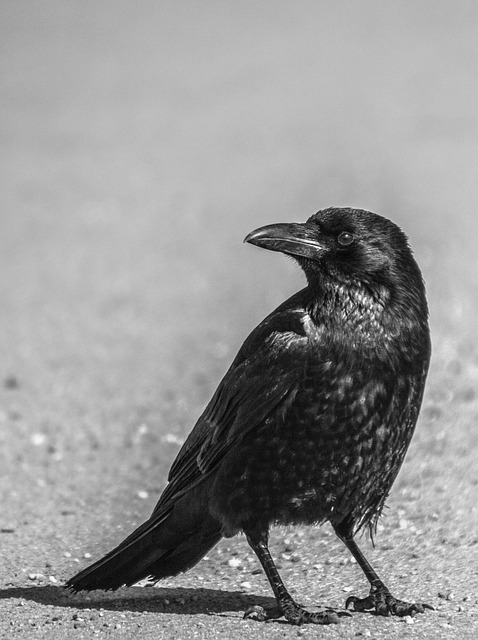Botox, a safe and popular treatment, effectively reduces crow's feet and smile lines by temporarily paralyzing facial muscles. Results last 3-6 months, depending on age, skin type, lifestyle, and muscle activity. Managing expectations is key, as first treatments may show gradual results, with touch-ups recommended for maintenance. Safety measures are crucial; choose a qualified practitioner to minimize side effects like bruising or swelling.
“Uncover the secrets behind achieving youthful skin with Botox treatments, specifically targeting crow’s feet and smile lines. This comprehensive guide explores the science-backed efficacy of Botox, delving into its remarkable results duration—up to several months.
Learn how age, skin type, and lifestyle choices influence treatment outcomes, discover realistic expectations, and understand the importance of maintenance for long-lasting effects. Additionally, we’ll discuss safety precautions, side effects, and expert insights to ensure informed decisions regarding Botox for crow’s feet and smile line reduction.”
Understanding Botox: The Science Behind Its Efficacy for Crow's Feet and Smile Lines

Botox, short for botulinum toxin, is a highly effective treatment for smoothing fine lines and wrinkles, particularly targeting crow’s feet and smile lines around the eyes and mouth. This injectable cosmetic procedure works by temporarily paralyzing muscles responsible for causing these facial creases. The science behind Botox’s efficacy lies in its ability to inhibit nerve signals that stimulate muscle contractions, resulting in reduced wrinkle visibility.
When administered by a qualified professional, Botox safely relaxes specific facial muscles, preventing them from contracting and pressing down on the skin. This action helps to prevent the formation of new wrinkles and can even improve existing fine lines, offering a more youthful appearance. Its effects typically last between 3-6 months, providing patients with a prolonged period of improved skin texture and a relaxed expression.
How Long Do Botox Results Last? An In-Depth Look at Duration

Botox treatments for crow’s feet and smile lines have become increasingly popular as a non-invasive way to reduce fine lines and wrinkles. The duration of results from Botox injections varies, offering patients a temporary yet effective solution. On average, the effects of Botox can last anywhere from 3 to 6 months, depending on several factors.
Several variables influence the longevity of Botox results. These include the patient’s age, skin type, lifestyle choices, and the amount and type of Botox used. For instance, younger patients with healthier skin may experience a longer-lasting effect compared to older individuals or those with more sensitive skin. Additionally, certain facial expressions can impact the speed at which the Botox wears off, as repeated movement in specific areas can shorten its duration. Understanding these factors empowers patients to manage expectations and make informed decisions regarding their cosmetic procedures.
Factors Influencing Botox Results: Age, Skin Type, Lifestyle Considerations

Botox treatments for crow’s feet and smile lines have become increasingly popular, offering a temporary yet effective solution for reducing fine lines and wrinkles. However, understanding that results can vary widely is essential. Several factors significantly influence how long Botox retains its effect and the overall outcome.
Age is one of the primary considerations; as we age, our skin loses elasticity, making it more challenging for Botox to prevent muscle contractions entirely. Skin type also plays a role; thicker, oilier skin may provide a longer-lasting foundation for Botox, while thinner or drier skin might require touch-ups sooner. Lifestyle choices, such as sun exposure and smoking, can accelerate the breakdown of Botox and affect its longevity. Additionally, individuals with more active lifestyles or certain medical conditions may experience different results due to varying muscle activity and skin healing processes.
Expectations vs. Reality: What to Expect From Your Botox Treatment

When considering Botox for crow’s feet and smile lines, it’s crucial to manage expectations. Many patients envision immediate, drastic changes, but reality often unfolds differently. Botox treatments typically result in gradual, subtle improvements over a period of 3-6 months. This time frame allows for the muscle relaxation to take effect, reducing the appearance of fine lines and wrinkles without looking overdone or artificial.
Understanding that results vary based on factors like age, skin type, and lifestyle is essential. Some patients may notice significant reductions in crow’s feet and smile lines after their first treatment, while others might require touch-ups for optimal results. Consistent care and realistic expectations are key to achieving the best outcomes from your Botox for crow’s feet and smile lines.
Maintenance and Touch-Ups: Ensuring Long-Lasting Results

Maintaining your Botox results is crucial for prolonging the effects, especially when targeting fine lines like crow’s feet and smile lines. After an initial treatment, it’s common to experience the full effect within a few days to a week, with results typically lasting between 3 to 6 months. To maximize duration, follow-up treatments are often recommended, serving as touch-ups to refine and maintain the desired outcome.
Regular maintenance sessions help address any new line developments or fading effects, ensuring your smile lines and crow’s feet remain minimized. A skilled aesthetic professional can tailor these touch-ups to your specific needs, using precise amounts of Botox to prevent over-treatment and potential side effects.
Safety and Side Effects: Precautions and Monitoring Botox Treatment

Botox treatments for crow’s feet and smile lines have become increasingly popular, but it’s crucial to understand the safety measures and potential side effects before proceeding with such procedures. These injections work by relaxing muscles, reducing the appearance of dynamic wrinkles. However, as with any medical treatment, there are risks involved. Common temporary side effects include mild bruising, swelling, or discomfort at the injection sites. In rare cases, more severe reactions like headaches, nausea, or difficulty breathing may occur, necessitating immediate medical attention.
To ensure a safe and effective Botox experience, it’s essential to choose a qualified and experienced practitioner. Regular monitoring after treatment is also vital. Patients should be aware of any unusual symptoms and inform their healthcare provider promptly. Precautions such as avoiding strenuous activities or certain medications for a period after the injection can help minimize risks. By being well-informed and following professional guidance, individuals can achieve desirable results while minimizing potential Botox side effects for crow’s feet and smile lines.
